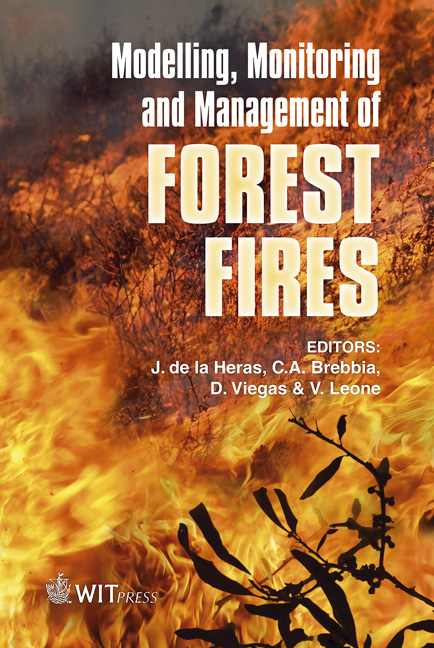Methodology For Measuring Geometrical And Thermal Characteristics Of Flames In Laboratory Forest Fires
Price
Free (open access)
Transaction
Volume
119
Pages
10
Page Range
101 - 110
Published
2008
Size
2,056 kb
Paper DOI
10.2495/FIVA080111
Copyright
WIT Press
Author(s)
E. Pastor, A. Àgueda, L. Martin, M. Muñoz, A. León, Y. Pérez & E. Planas
Abstract
Flame properties from forest fuels are needed for fire behaviour modelling, either for developing empirical models or for validation purposes. Measuring such properties is usually a very complex task due to the fluctuation in time and space and to the ambiguity in the definition of several geometrical variables. Moreover, there is a lot of subjectivity in most of the methods historically used in fire laboratories, which should be strongly avoided. In this paper, we present a standard, objective and automated methodology to determine several geometrical and thermal properties of laboratory and open stationary fires, based on IR and visible imagery techniques. We develop several procedures to obtain the mean flame height based on the concept of flame intermittence, the flame pulse frequency, the temperatures distribution within the flame and the emissive power and the radiation flux of the flames. Keywords: flame geometry, thermal characteristics, IR imagery, stationary fires. 1 Introduction Understanding flame properties and behavior is an essential issue in predicting forest fire spread and suppression potential. Both geometrical and thermal flame characteristics are needed as input variables in different sorts of fire studies. Flame length and angle are required for radiative heat transfer calculations [1], crowning potential modeling [2] and suppression difficulty estimations [3].
Keywords
flame geometry, thermal characteristics, IR imagery, stationary fires.





